The Qiantang is the mother river of Zhejiang Province in eastern China. The river has two sources: one in the north and the other in the southwest. In the southwest, it is the Qu River in the upstream. It flows northward and converges with Jinhua River and acquires a new name the Lan River. In the north, the upstream is called Xi’an River. It goes through an area of mountains before it comes to Fuyang. This part of the Qiantang River is known as Fuchun River. The river empties into Hangzhou Bay before it merges with the East China Sea. The Qiantang River not only offers a view of natural majesty and splendor but also inspires traveling poets. Selected Poems on Qiantang River, published by Hangzhou Press in 2019, anthologizes nearly 3,000 poems by 780 poets from the Eastern Jin up to the 21st century.
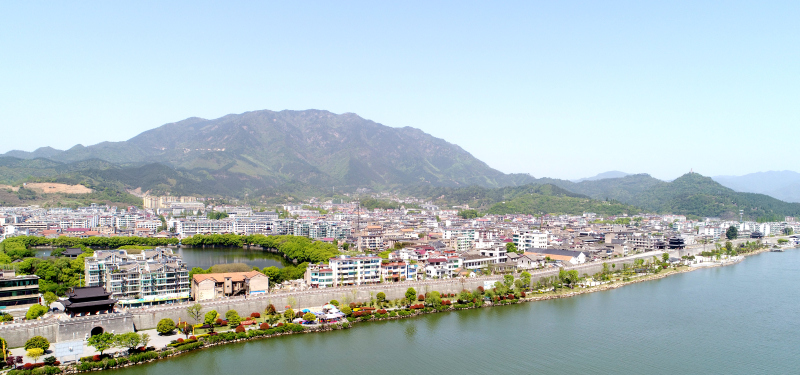
Xie Lingyun (385-433)
He is considered China’s first nature poet. While serving as governor of Yongjia, then a prefecture in southern Zhejiang, he wrote a batch of poems singing of the landscape and integrating man and nature. Today, people of Wenzhou proudly claim that the picturesque Nanxi River which traverses across their part of Zhejiang is the birthplace of China’s poems about mountains and rivers. However, this reputation isn’t undisputable. On his way to Yongjia to take the office in 422, Xie traveled up the Qiantang River. He wrote poems about places along the Fuchun River. For the purpose of the book compiled and published by Hangzhou Press, Xie is the first poet who dedicated his poems to the grand natural beauty of the Qiantang River, before he even saw the Nanxi River in the south.
Xie’s nature poems opened a new horizon for other poets of his time and beyond. Among these poets is Shen Yue (441-513). Shen’s contribution to Chinese literature is that he is one of those who discovered the tones of Chinese language. He was instrumental in creating a critical tonal euphony system for writing poems and suggesting eight tonal defects that should be avoided. The system laid a solid foundation for the flourishing of the “modern-style poetry” of the Tang (618-907), which is marked by strict tonal patterns and rhyme schemes. Shen wrote a poem about the Xin’an River on his way to serve as governor of Dongyang Prefecture in central Zhejiang. The poem is one of the earliest verse masterpieces about the river.
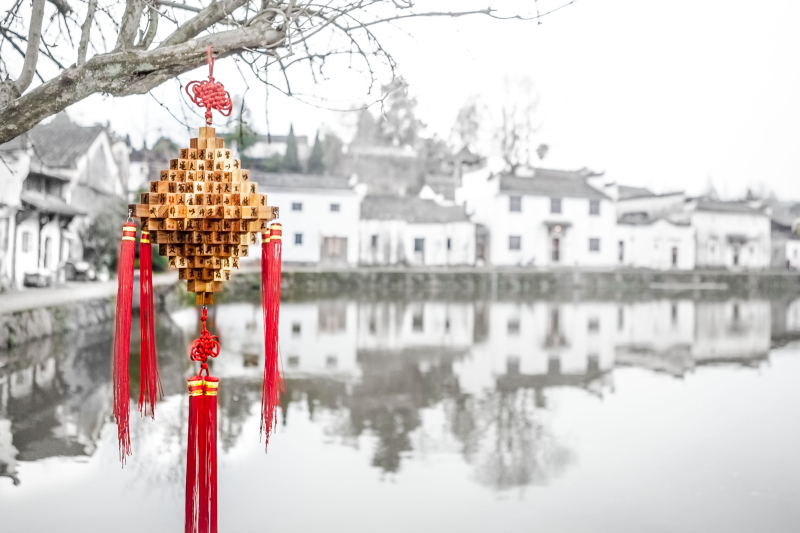
Meng Haoran (689-740)
Meng is considered as the best of the Tang poets who wrote about nature and rural life. Three Hundred Poems of the Tang anthologizes 14 of his poems, including the two about Qiantang River. In fact, he wrote more about the river. He is among the few of ancient times whose poems cover both the northern and the southern branches of the Qiantang. One of the poems reads as follows “My boat is moored near an isle in mist gray; I’m grieved anew to see the parting day. On boundless plain trees seem to scrape the sky; In water clear the moon appears so nigh.”The river inspired him and his poems about the river are in the timeless part of China’s poetry.
Bai Juyi (772-846)
The West Lake of today in Hangzhou owes a great deal to Bai who had the West Lake dredged and had a causeway built in the lake during his years as Hangzhou governor. No wonder it is called Bai Causeway today. Some of his best known short poems are about the beauty of the West Lake. However, he left a mystery to scholars of literature. He wrote three short poems titled Memories of Jiangnan in his evening years while living in retirement in Luoyang. The three poems are respectively about Jiangnan, Hangzhou and Suzhou. Strangely enough, the poem about Hangzhou does not mention the West Lake. Instead it sings of the Qiantang River. Some scholars argue that the poet wanted to be modest about his contribution to the beauty of the lake. But some scholars of today point out that the Qiantang River was much more famous than the West Lake in the centuries of the Tang. This claim is convincingly supported by the number of poems about the river penned by preeminent poets in the Tang.
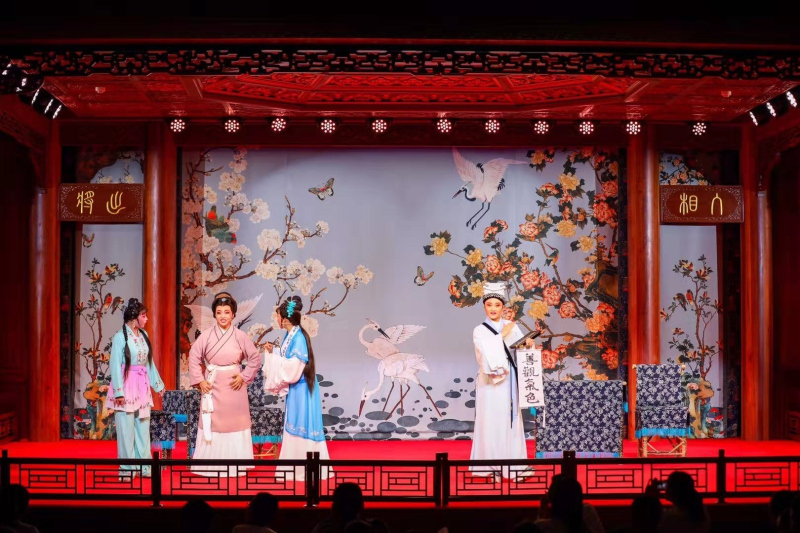
Fan Zhongyan (989-1052)
Chun’an, Jiande and Tonglu, now part of greater Hangzhou, used to be a key prefecture known as Muzhou in the upstream Qiantang River region. Fan Zhongyan served as governor of Muzhou for six months from 1033 to 1034. He began to write poems about Muzhou and the Qiantang River on his way to his governance. The statistics indicate that these poems account for one sixth of his poems.
Li Qingzhao (1084-1155)
In 1135, Li Qingzhao came to Jinhua as a war refugee. Her husband had passed away and the collection of antiques he had put together was lost. The 51-year-old woman was lost in grief and memory of the past. Part of the poem reads: “Things are the same, but he’s no more and all is o’er. Before I speak, how can my tears not pour!” (translated by Xu Yuanchong)
Though traditional poem-writing patterns have been largely marginalized since 100 years ago, modern poets of the 20th century such as Mao Zedong, Yu Dafu and Guo Moruo wrote poems about the Qiantang River. Hangzhou has been promoting the Qiantang River as the Road of Poetry in recent years. Some poetry organizations have come into being.
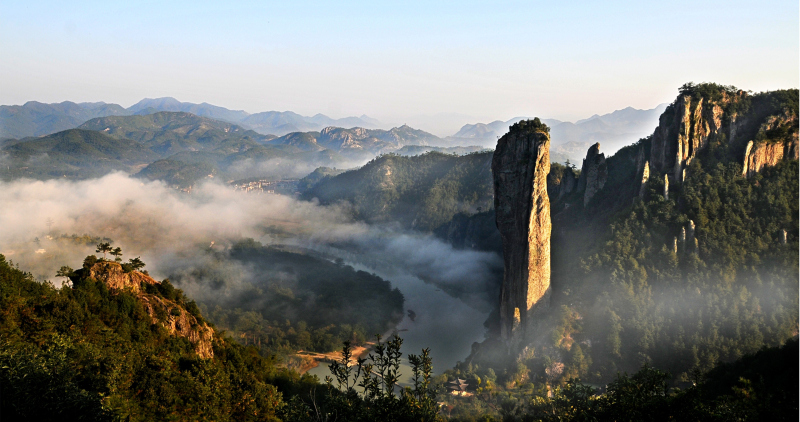
钱塘江是浙江的母亲河。从入海口溯江而上,下游为狭义的钱塘江,以“钱江潮”闻名于世;中游为富春江,“奇山异水,天下独绝”;上游分为南源与北源,南源为衢江,流至兰溪境内纳金华江接兰江,一路云水烟岚,桨声鸟语;北源为新安江,以山高水清、滩多势险著称。
钱塘江集壮美与秀丽于一身,又是古代交通的黄金水道,深受行游诗人的青睐。正是历代诗人词客后先相继,留下无数的作品和故事,形成了自然风光与人文蕴藉完美结合的“钱塘江诗路”。杭州出版社2019年出版的《钱塘江诗词选》,选编自东晋至现当代780多位诗人近3000首诗词佳作,精彩纷呈,但也仅是取鼎中一脔。一篇短文更是无法承担全面介绍的任务,且举几位与钱塘江关系尤为密切的诗人为代表,略窥诗路之胜。
谢灵运
最早的山水诗献给钱塘江
东晋南北朝大诗人谢灵运被尊为“中国山水诗鼻祖”,他集中创作山水诗,是在担任永嘉太守期间。永嘉郡,即今温州地区,所以今天温州人很自豪地宣称楠溪江是中国山水诗的发源地。
然而,如果要争个先后,钱塘江则先拔一筹。谢灵运于永初三年(422年)赴任永嘉,经由富春江,留下了《初往新安至桐庐口》《七里濑》《夜发石关亭》等诗作;元嘉年间经富春江北上,又作《富春渚》。这些诗对富春江景色的描写,如“江山共开旷,云日相照媚”,“石浅水潺湲,日落山照曜”,“亭亭晓月映,泠泠朝露滴”,“溯流触惊急,临圻阻参错”,可与吴均《与朱元思书》对读。而《七里濑》诗中“目睹严子濑,想属任公钓。谁谓古今殊,异代可同调”,开后世咏严子陵诗词之先河。可以说,谢灵运最早有意识地用诗歌描摹钱塘江两岸山水风光,是“钱塘江诗路”的开创者。随后,南北朝诗人纷纷加入这个行列,其中特别值得一提的是浙江德清人沈约。
沈约是最早发现汉语有声调的人之一,他和周顒等人提出“四声八病”说,并运用到诗歌创作实践,创“永明体”,为唐代近体诗的兴起奠定了基础。沈约自京城建康(今南京)赴任东阳(今金华)太守途中作《新安江至清浅深见底贻京邑同好》,描摹细致传神,是最早的新安江诗词名篇,其中云:“洞澈随深浅,皎镜无冬春。千仞写乔树,百丈见游鳞。”沈约还写过《早发定山》诗,也是用心之作。定山,又称“浙山”,在钱塘江下游。
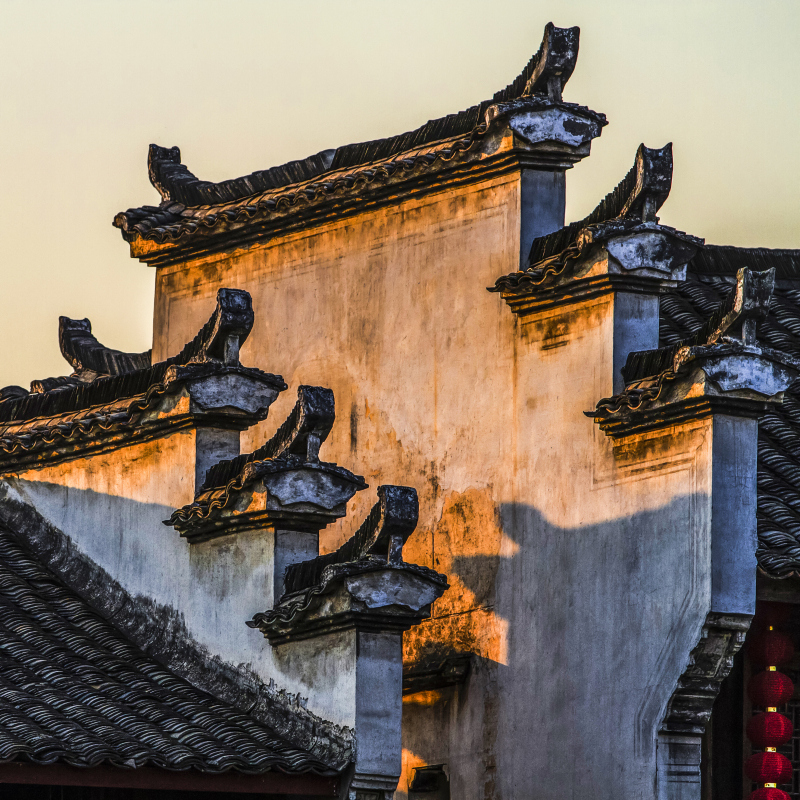
孟浩然
勤奋敬业的行吟诗人
孟浩然号称“唐代山水田园诗第一人”,《唐诗三百首》收录其诗14首,其中两首写钱塘江:
山暝听猿愁,沧江急夜流。
风鸣两岸叶,月照一孤舟。
建德非吾土,维扬忆旧游。
还将两行泪,遥寄海西头。
移舟泊烟渚,日暮客愁新。
野旷天低树,江清月近人。
孟浩然曾长期漫游吴越,对浙江山水相知甚深。这两首诗写的是钱塘江的中游、上游,桐庐江即富春江流经桐庐县的一段,而新安江流经建德的一段则又称建德江。二诗都写“客愁”,前诗中还直言“建德非吾土”(这里的“建德”指建德郡),如果心胸狭窄的主人听了,也许会心生不悦;但这不妨碍它们成为钱塘江诗路上最耀眼的明珠。诗是需要真情实感的,发自内心的感慨,比那些直接的赞美之辞更具价值。
孟浩然是少有的写遍钱塘江上游(包括南源、北源)、中游和下游的大诗人。在上游南源,他写下《宿武阳川》(武阳川在今武义);在下游,他写下《早发渔浦潭》《将适天台留别临安李主簿》《初下浙江舟中口号》等诗作。钱塘江和孟浩然,可谓两不相负。
白居易
钱塘江与西湖的艰难选择
白居易是西湖的知音和恩人,他一手将西湖从水利工程打造成闻名遐迩的风景区。“最爱湖东行不足,绿杨阴里白沙堤”,“未能抛得杭州去,一半勾留是此湖”,他对西湖的喜爱与眷恋浓得化不开。
然而,白居易晚年退居洛阳时所写名篇《忆江南》,却给后世留下谜团。《忆江南》共三首,其一泛忆江南,其二忆杭州,其三忆苏州。忆杭州的这首,只写到杭州的两个景观:“山寺月中寻桂子,郡亭枕上看潮头。”没有西湖的影子。这是为啥,难道西湖不是白居易的最爱吗?
有专家说,白居易不写西湖,是避嫌,因为他开发西湖有功。这种说法根本经不起推敲。白居易写过大量赞美西湖的诗词,他在宣传西湖方面从来都是很高调的,怎么偏偏写这首诗的时候忸怩了起来?其实,在唐代,西湖是个后起之秀,其知名度远不如钱江潮、灵隐寺、天竺寺。《忆江南》只有区区27字,掐头去尾,真正写景的只有中间两句14个字,要选当时最具代表性的景观,只能舍弃西湖了。白居易写钱塘江的诗词也不少,如一首题为《潮》的七绝:“早潮才落晚潮来,一月周流六十回。不独光阴朝复暮,杭州老去被潮催。”借潮水抒发人生感慨,也可看出他对钱江潮是很了解的。
作为唐代杭州最佳景观,钱江潮自然少不了名篇佳句。初唐诗人宋之问《灵隐寺》中的“楼观沧海日,门对浙江潮”,白居易同龄人刘禹锡的《浪淘沙》:“八月涛声吼地来,头高数丈触山回。须臾却入海门去,卷起沙堆似雪堆。”都为历代所传诵。但很多选本把李白《横江词》作为颂美钱江潮的佳作,却令人啼笑皆非。李白《横江词》共六首,此为第四首。诗题中明确道出的“横江”,即横江浦,为古长江渡口,在今安徽和县东南。“浙江八月何如此”,意思是钱江潮哪比得过横江潮啊,分明是借抑此以扬彼。当然,李白找钱江潮作衬托,恰恰说明钱江潮在“潮界”至高无上的地位。
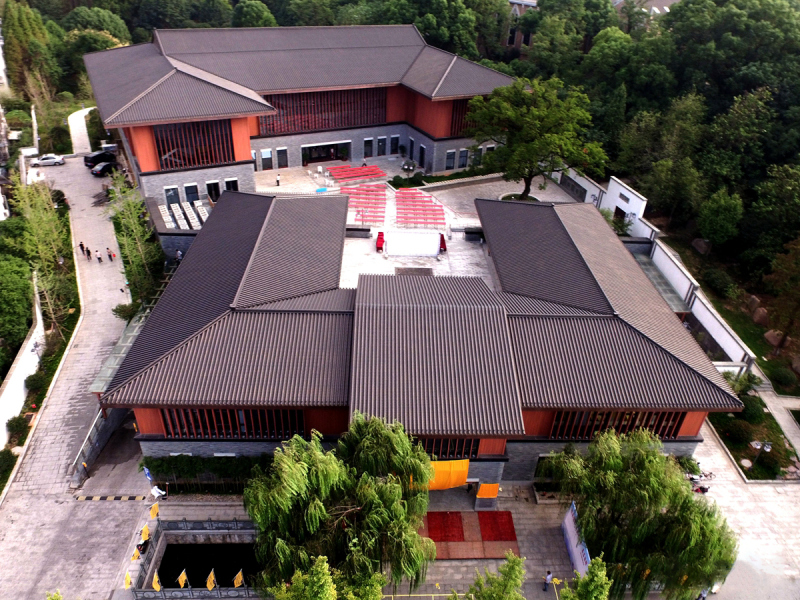
范仲淹
诗情喷涌如江水
钱塘江上游流经的淳安、建德以及中游流经的桐庐,今皆属杭州,古代曾属与杭州并立的大州——唐宋时期或称睦州,或称严州。北宋名臣范仲淹于宋仁宗明道二年(1033)十二月被贬为睦州知州,次年(景祐元年,1034)正月从京城出发,四月至睦州任所,六月即调任苏州。赴任途中开始涉笔睦州,到离任止,短短半年时间,范仲淹写下大量与睦州、与钱塘江有关的诗词,据统计占到他存世诗歌作品的六分之一。脍炙人口的《江上渔者》,被认为是其中的一首:
江上往来人,但爱鲈鱼美。
君看一叶舟,出没风波里。
范仲淹所作的《萧洒桐庐郡十绝》,是十首五绝,每首第一句均为“萧洒桐庐郡”。第十首写的是富春江上的严子陵钓台:
萧洒桐庐郡,严陵旧钓台。
江山如不胜,光武肯教来?
这组诗中的“桐庐郡”指睦州,州治在今建德,十首诗的内容则涉及睦州全境。因为有“桐庐”二字,今天正好成为桐庐县的最佳广告。
在范仲淹之前,晚唐大诗人杜牧也曾任睦州刺史,留下多首诗作。其中《睦州四韵》中云:“有山皆掩映,无处不潺湲。”范仲淹《萧洒桐庐郡十绝》其五引用杜牧的句子:“萧洒桐庐郡,家家竹隐泉。令人思杜牧,无处不潺湲。”继美前贤,传承文脉,令人称羡。
李清照
江水无法承载的家国愁
宋绍兴五年(1135),金兵南侵,李清照避难金华。当时她丈夫已逝,多年收藏的金石文物散失殆尽。春光依旧,物是人非,李清照悲从中来,写下《武陵春·春晚》:
词中的“双溪”,在今金华燕尾洲地段,义乌江、武义江在此会合为金华江(又称婺江),故称。这双溪舴艋舟载不动的“许多愁”,是深深的家国愁。
金华在南北朝时称“东阳郡”,沈约任太守时建玄畅楼,常登楼赋诗,留下名作《八咏诗》。唐人为纪念沈约,遂改名为八咏楼,历代诗人多有题咏。李清照写过《题八咏楼》:
千古风流八咏楼,江山留与后人愁。
水通南国三千里,气压江城十四州。
在所有题八咏楼的诗词中,这首诗显得不同凡响。不禁令人想起这位女诗人写严子陵的《夜发严滩》,也是与众不同:
巨舰只缘因利往,扁舟亦是为名来。
往来有愧先生德,特地通宵过钓台。
前诗的气势,后诗的识见,都是压倒须眉的。
黄景仁
天才诗人对新安江的感叹
虽说有唐诗宋词在前,后世的诗人仍然能写出让人眼睛一亮的好诗词。
被誉为“天才诗人”的清代诗人黄景仁(字仲则),写过一首类似打油诗的《新安滩》,也是秒杀众多咏新安江的诗词:
一滩复一滩,一滩高十丈。
三百六十滩,新安在天上。
这首诗像一道数学题,计算的结果是:新安城在三千六百丈高的地方,那应该是天上了。作者用夸张的手法,极写新安江滩多而险。
清代大才子纪晓岚游富春江时写有《富春至严陵山水甚佳四首》,其一云:
沿江无数好山迎,才出杭州眼便明。
两岸蒙蒙空翠合,琉璃镜里一帆行。
大诗人袁枚则有《桐江作三首》,其一云:
桐江春水绿如油,两岸青山送客舟。
明秀渐多奇险少,分明山色近杭州。
这两位都是善于抓住山水风光的特色,并且善用比喻、善于概括,让读者不仅如临其境,更有豁然开朗的感觉。
浙江有一个特点:文化的传承从未中断,传统与当下紧密对接,交相辉映。100年前白话文运动兴起,传统诗词逐渐被边缘化,但钱塘江诗词仍时有亮点,像毛泽东、郁达夫、郭沫若分别创作了吟咏钱江潮、富春江、千岛湖的名篇。近年来,随着全社会对传统文化的关注,尤其是浙江省政府提出打造“钱塘江诗路”,钱塘江诗词的欣赏、创作、应用受到相关地区和机构的高度重视,出现一系列可喜的成果。如杭州市和诗词与楹联学会合作,开展钱塘江沿线乡镇“诗词之乡”建设,极大地调动了当地的积极性,有力地促进了文旅融合发展。相信在各方的共同努力下,我们一定能不负前贤、增华继美,让诗词之江代代流淌!
